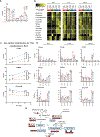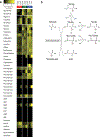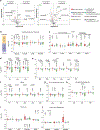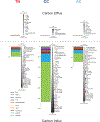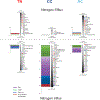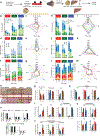Quantitative analysis of metabolic fluxes in brown fat and skeletal muscle during thermogenesis
- PMID: 37337122
- PMCID: PMC10696589
- DOI: 10.1038/s42255-023-00825-8
Quantitative analysis of metabolic fluxes in brown fat and skeletal muscle during thermogenesis
Abstract
Adaptive thermogenesis by brown adipose tissue (BAT) dissipates calories as heat, making it an attractive anti-obesity target. Yet how BAT contributes to circulating metabolite exchange remains unclear. Here, we quantified metabolite exchange in BAT and skeletal muscle by arteriovenous metabolomics during cold exposure in fed male mice. This identified unexpected metabolites consumed, released and shared between organs. Quantitative analysis of tissue fluxes showed that glucose and lactate provide ~85% of carbon for adaptive thermogenesis and that cold and CL316,243 trigger markedly divergent fuel utilization profiles. In cold adaptation, BAT also dramatically increases nitrogen uptake by net consuming amino acids, except glutamine. Isotope tracing and functional studies suggest glutamine catabolism concurrent with synthesis via glutamine synthetase, which avoids ammonia buildup and boosts fuel oxidation. These data underscore the ability of BAT to function as a glucose and amino acid sink and provide a quantitative and comprehensive landscape of BAT fuel utilization to guide translational studies.
© 2023. The Author(s), under exclusive licence to Springer Nature Limited.
Conflict of interest statement
Figures




